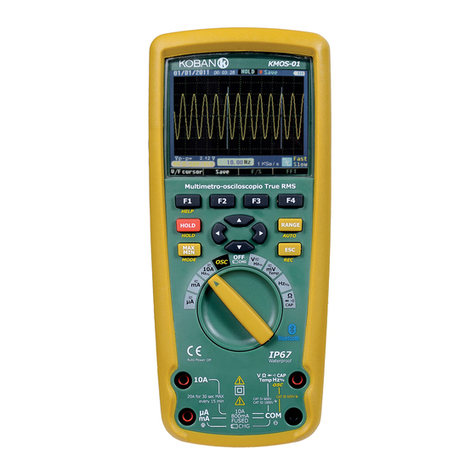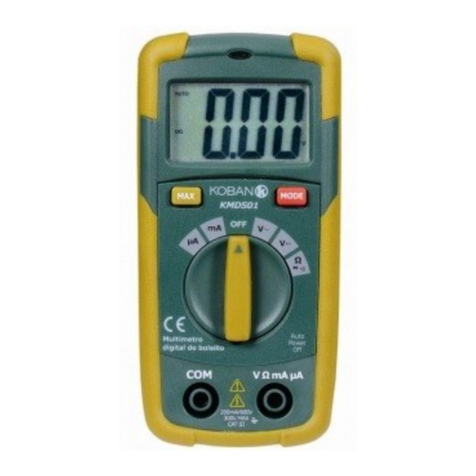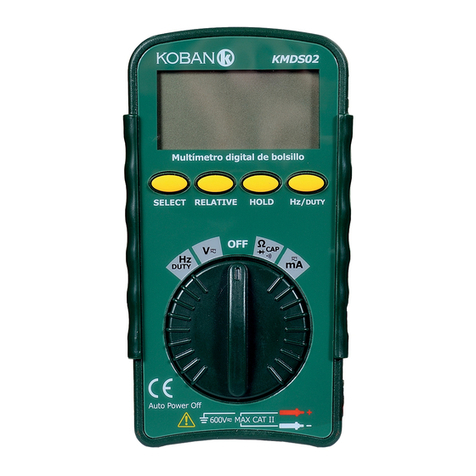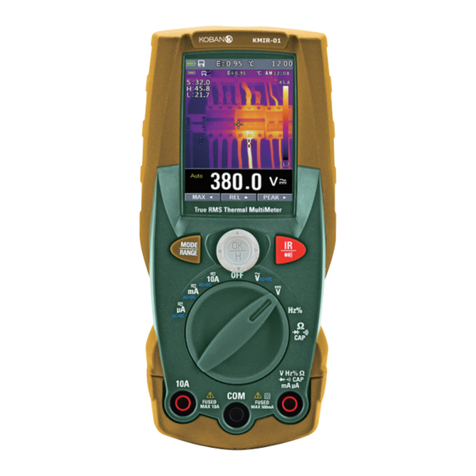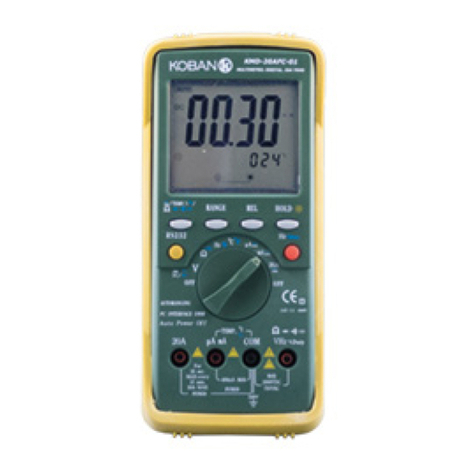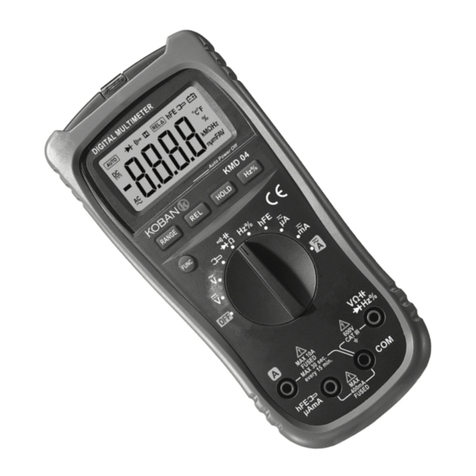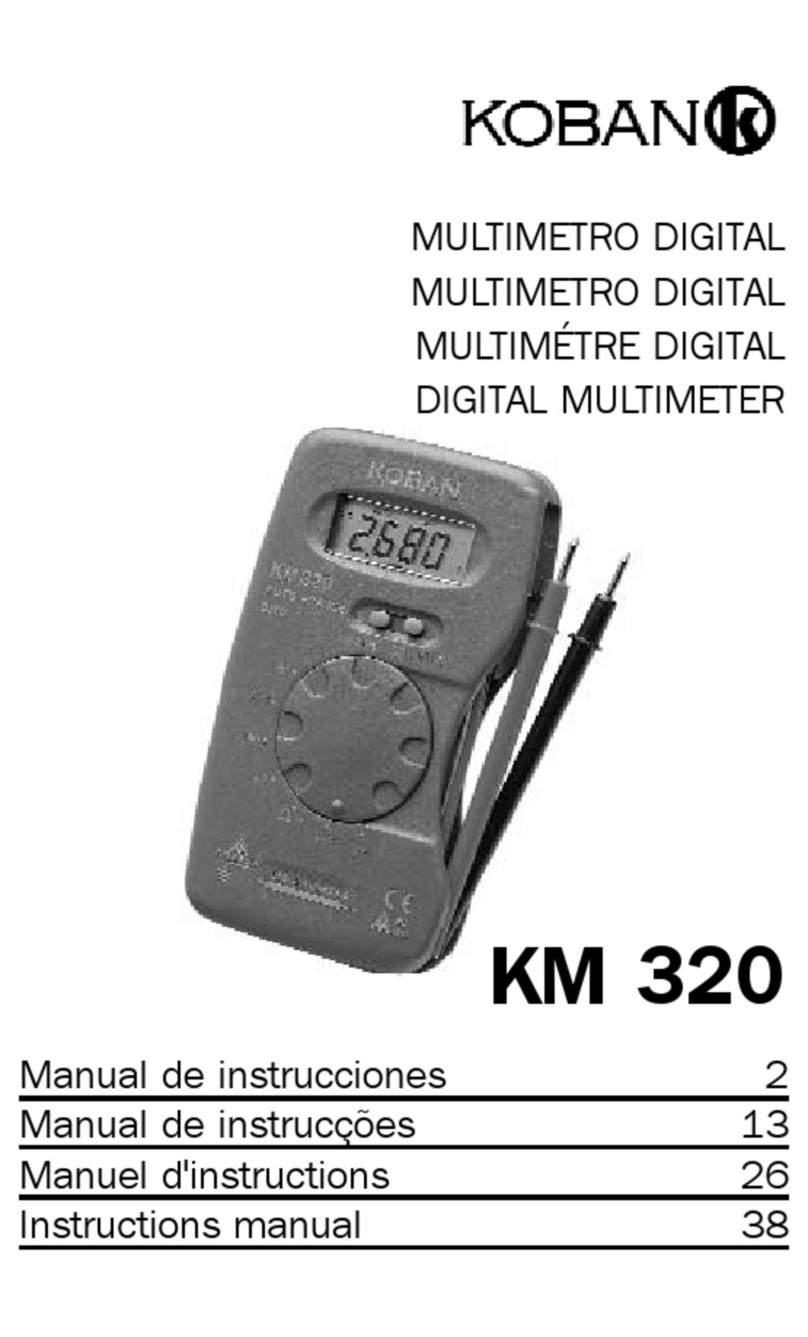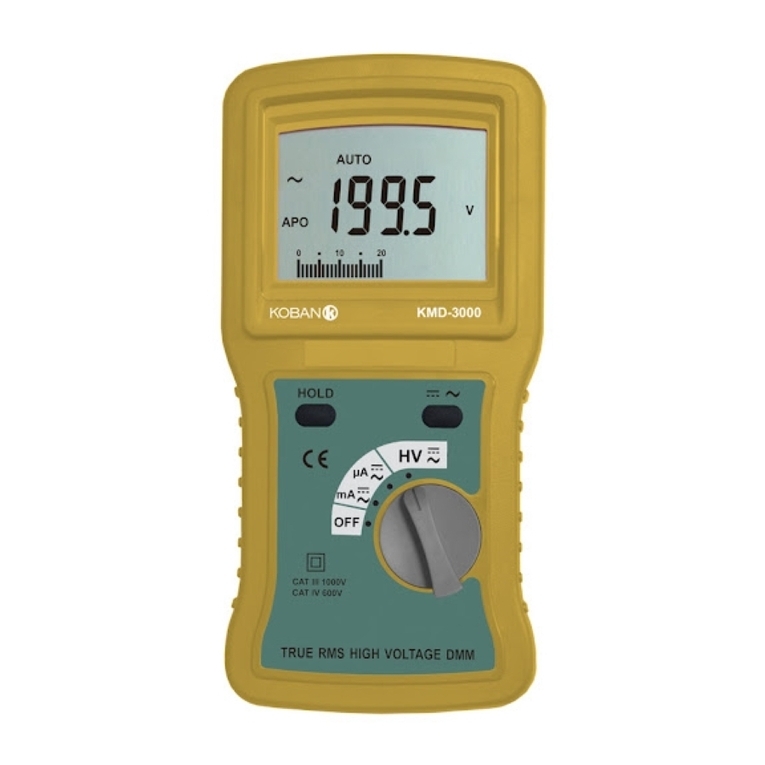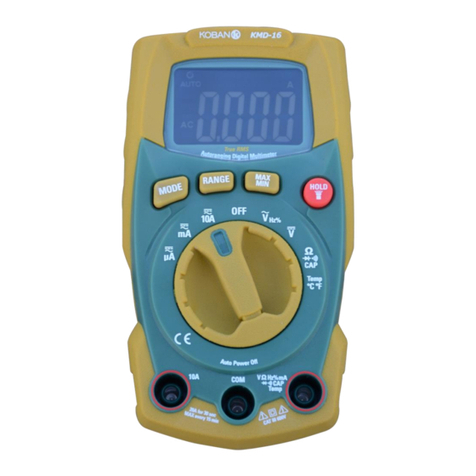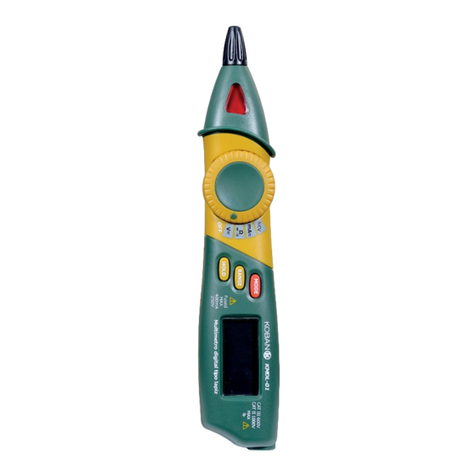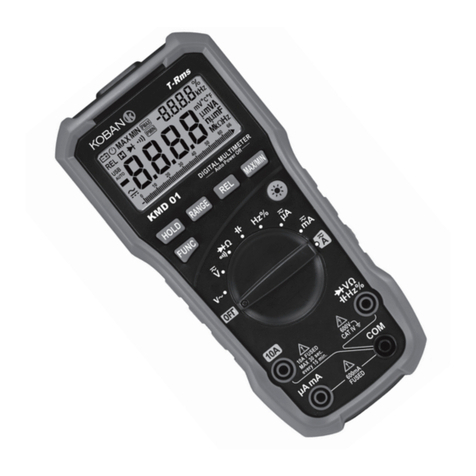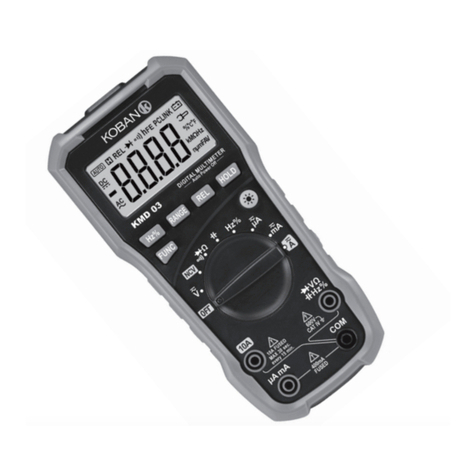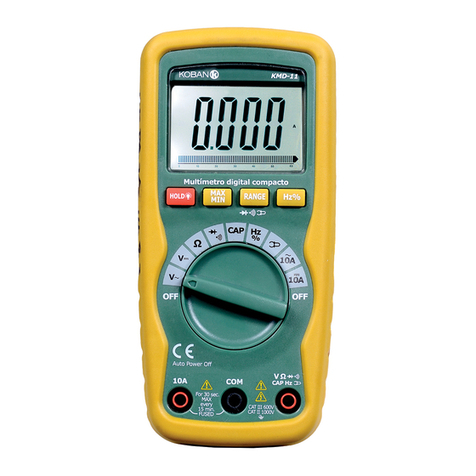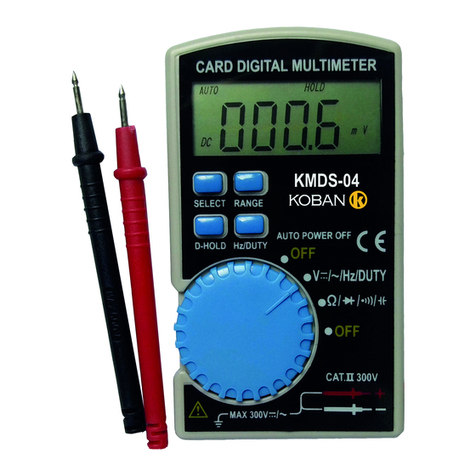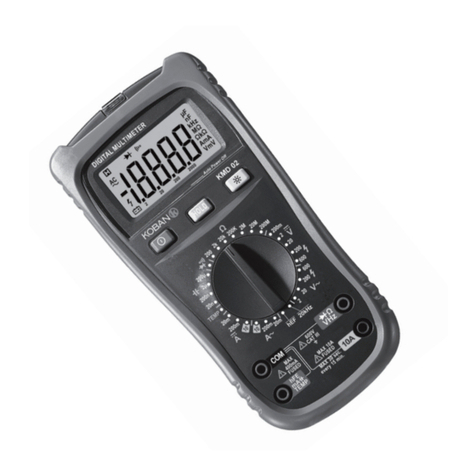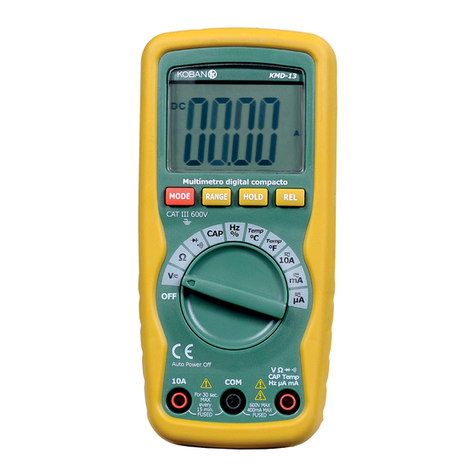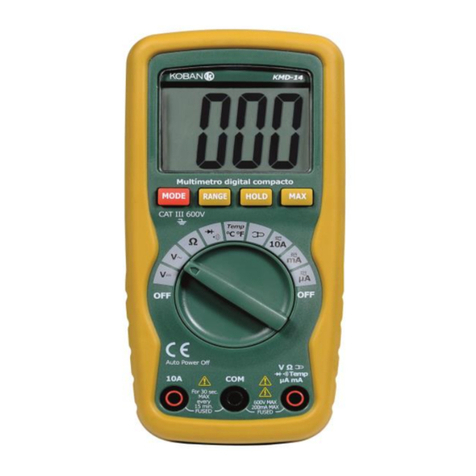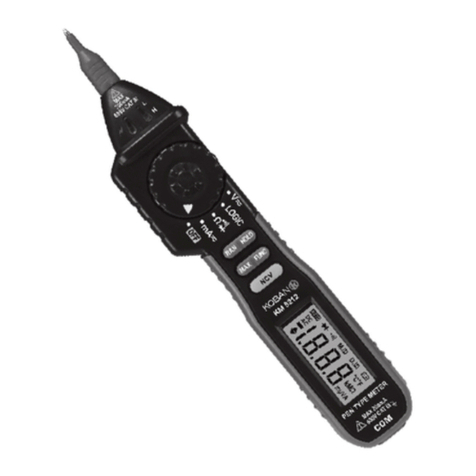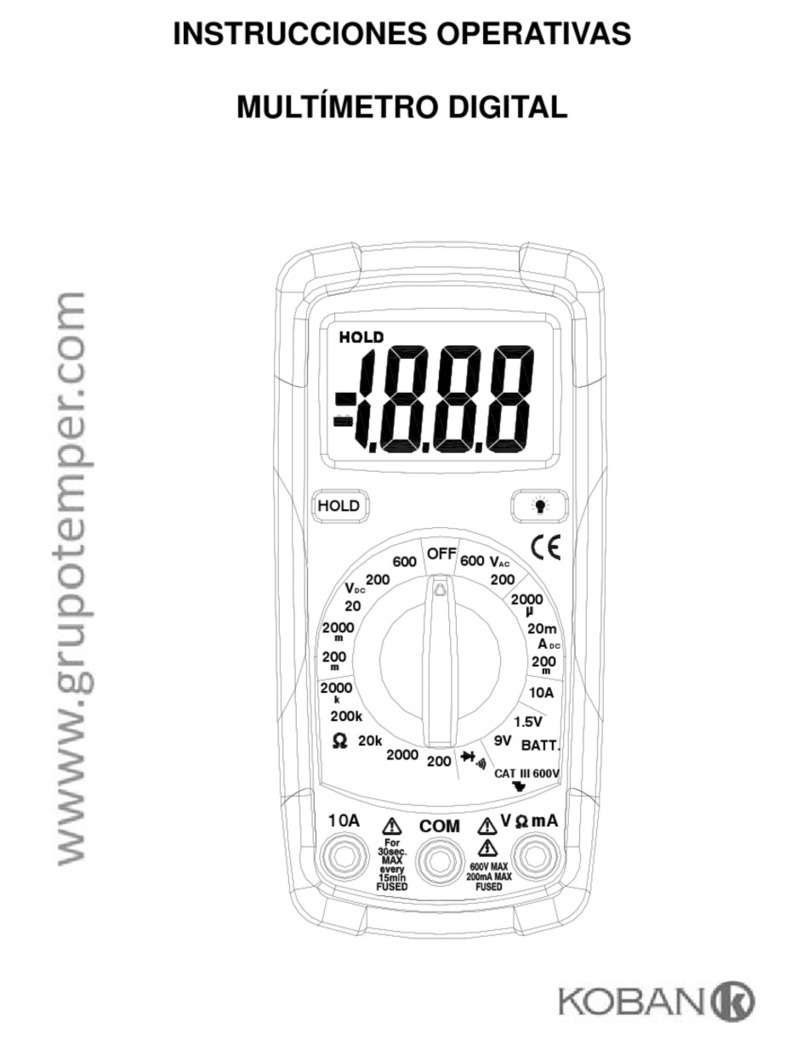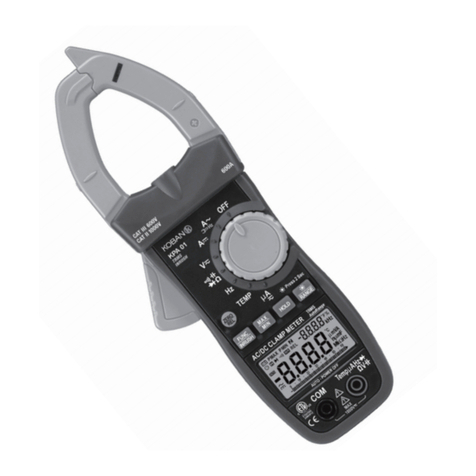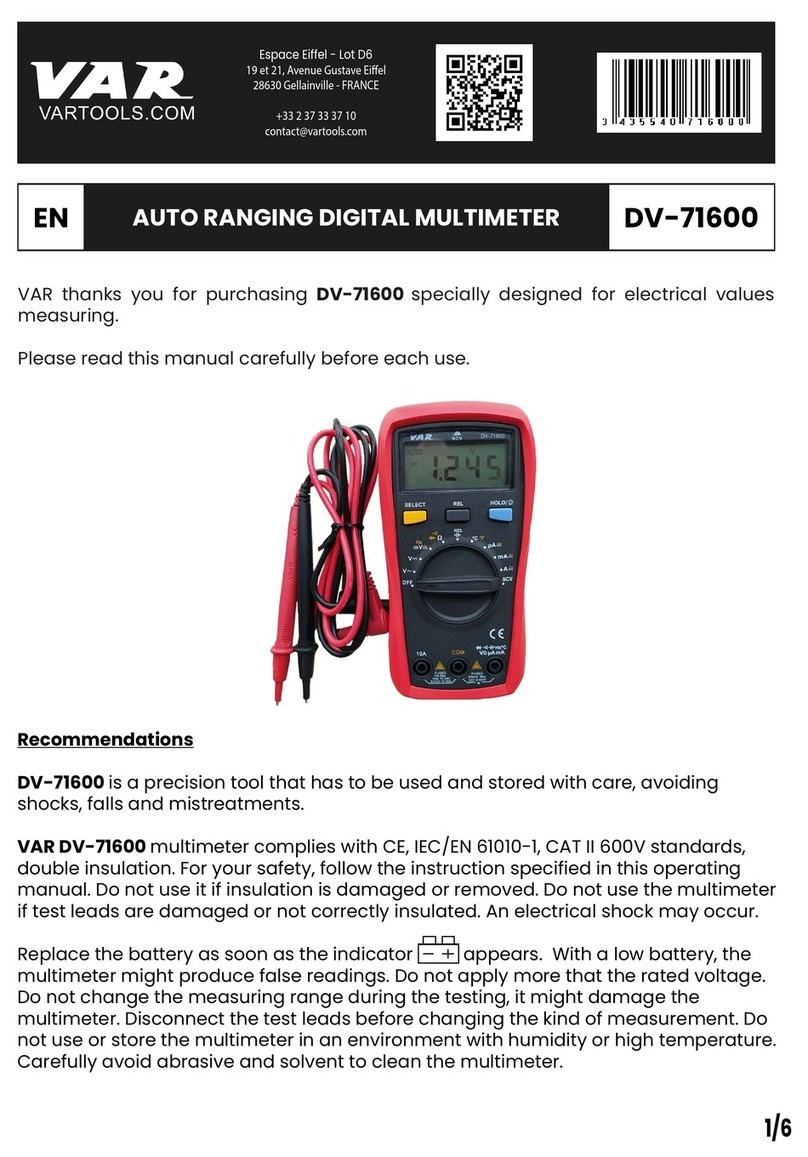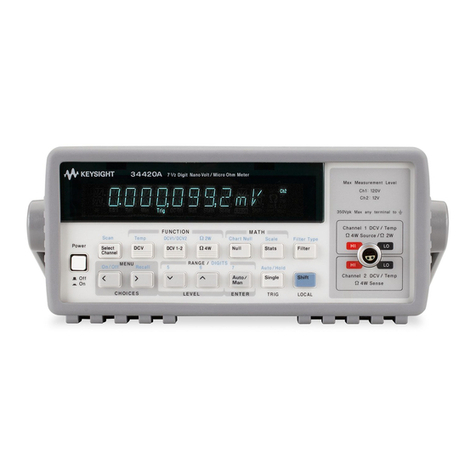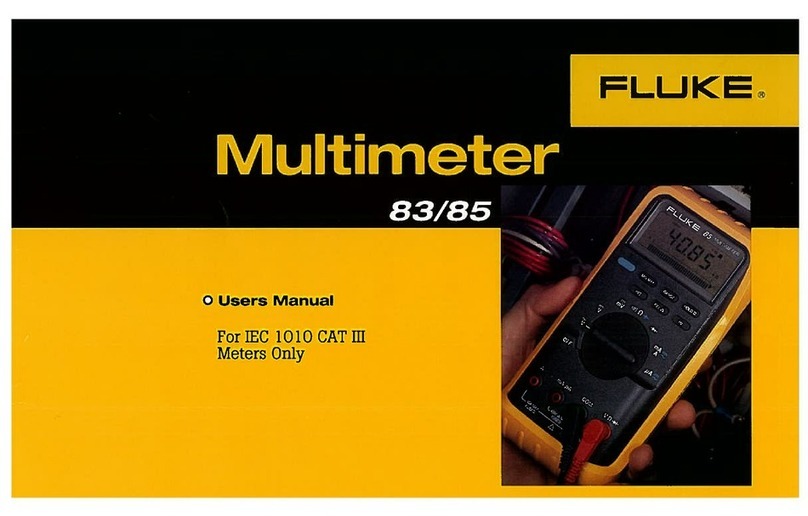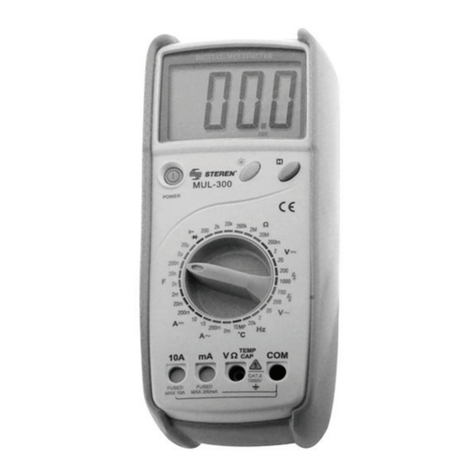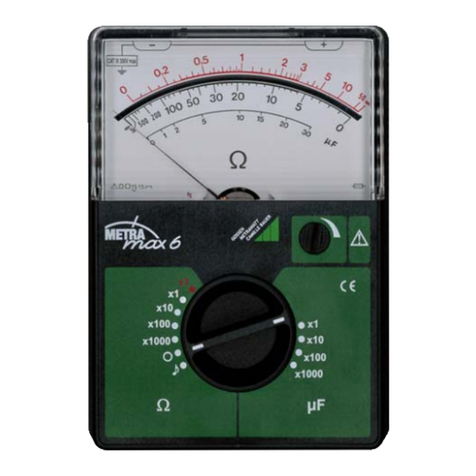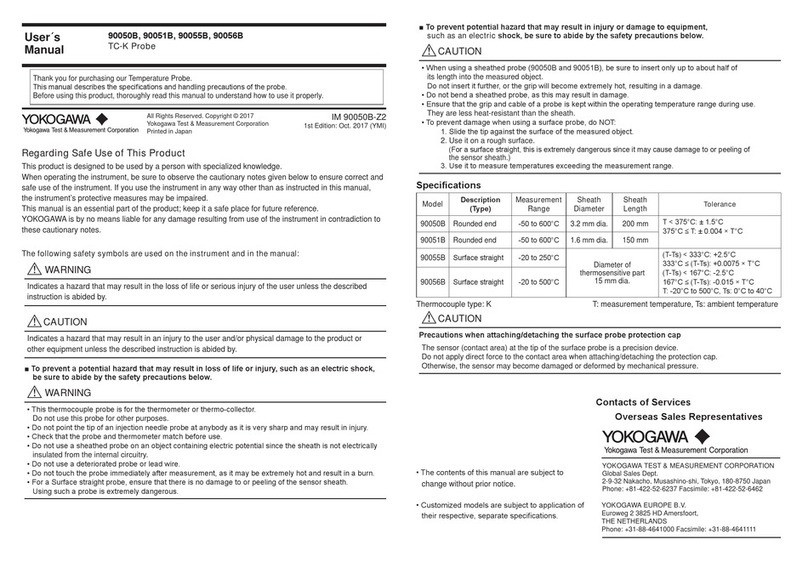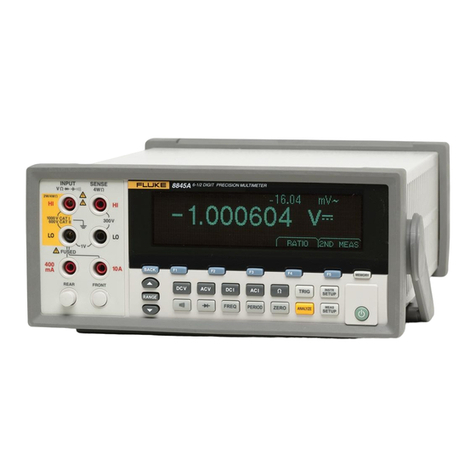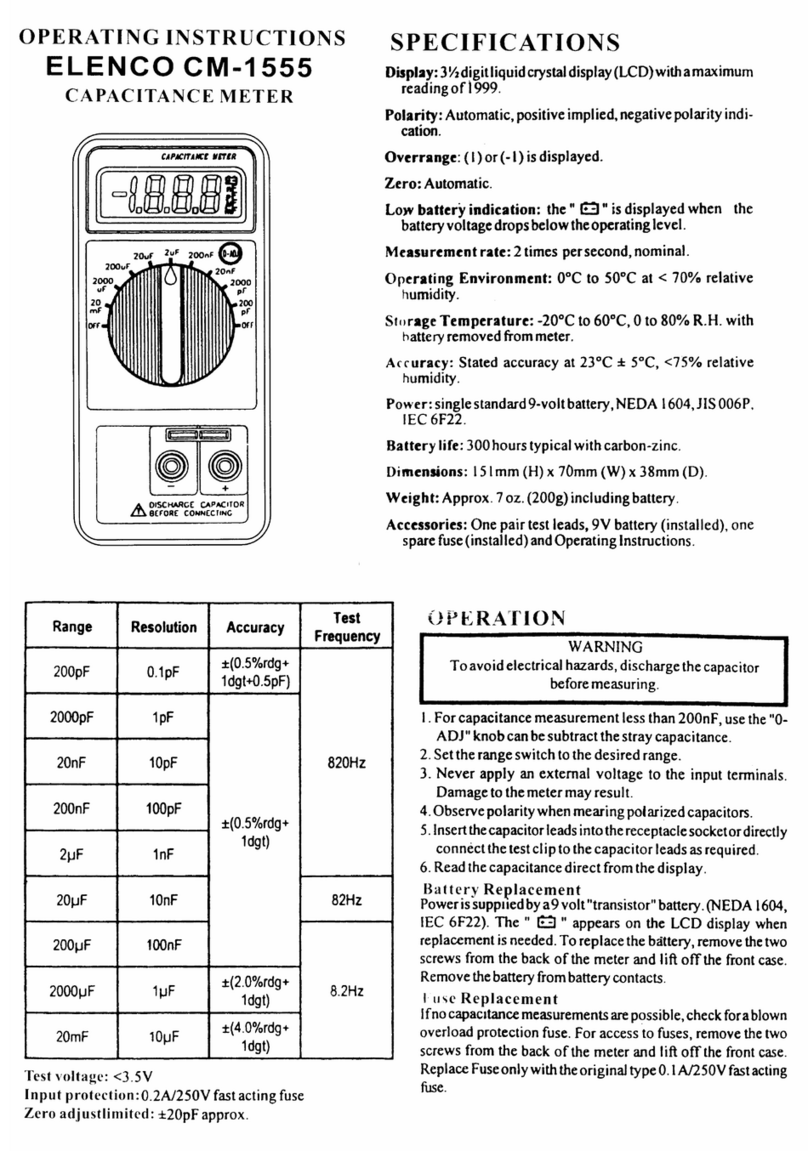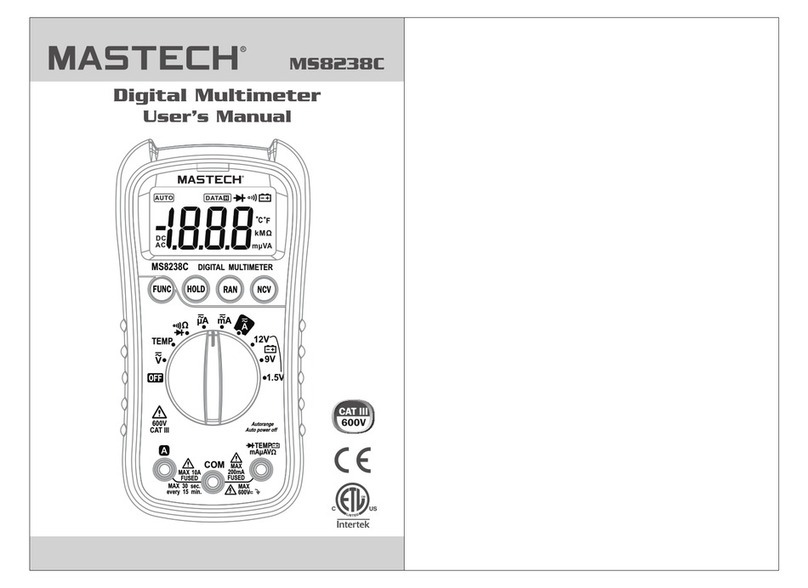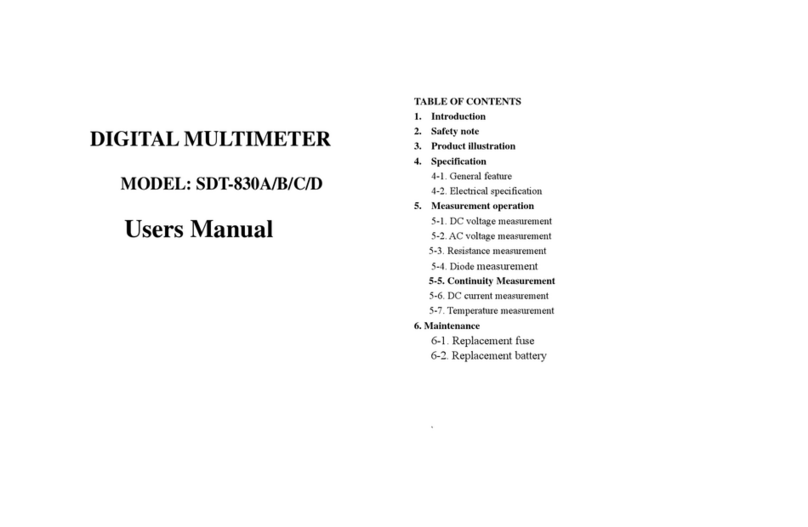
KPA 03
Pinza amperimétrica
7Manual de instrucciones |www.grupotemper.com
Prueba de aislamiento
(Unidad de prueba de aislamiento
opciónal de 500 V).
1.Conecte los tres enchufes tipo
banana VΩ, COM y EXT del
comprobador de aislamiento al
medidor VΩ, COM o EXT.
2.Gire el selector de la pinza a la
posición 2000MΩ.
3.Sitúe el selector de escala de la
unidad probadora del aislamiento
en la posición 2000 MΩ.
4.Use el comprobador de aislamiento
de las tomas de prueba, conecte
su entrada L, E a las instalaciones
a probar (La instalación a probar
debe estar apagada).
5.Sitúe el botón de encendido de
la probadora de aislamiento en la
posición ON (encendido).
6.Suelte el pulsador PUSH 500 V;
se encenderá el diodo rojo de
500. La lectura del display del
medidor muestra el valor de la
resistencia de aislamiento. Si la
lectura es inferior a 19 MΩ, cambie
el medidor y el comprobador de
aislamiento a la escala 20 MΩ,
pudiendo así incrementar la
precisión.
7.Si el comprobador de aislamiento
no está en uso, el botón de
encendido deberá estar en la
posición OFF (apagado), y las
tomas de prueba deberán dejarse
en las conexiones de entrada
E, L. Puede incrementarse así la
duración de la pila y evitar riesgos
de descarga eléctrica.
Medición de tensión
1.Conecte la toma de prueba negra a
la clavija COM y la toma de prueba
roja a la clavija VΩ.
2.Sitúe el interruptor de función en
las posiciones de escala V o V
y conecte las tomas de prueba
a través de la fuente o carga a
medir. Se indicará la polaridad de
la conexión de la toma roja junto
con el valor del voltaje al realizar la
medición del voltaje de corriente
continua.
3.Si sólo se muestra el signo “1”,
indica una situación de sobreescala
y deberá seleccionarse la escala
más alta.
Medición de resistencia
1.Conecte la toma de prueba negra a
la clavija COM y la toma de prueba
roja a la clavija V/Ω.
2.Sitúe el selector giratorio en la
posición Ω deseada y conecte las
tomas de prueba a través de la
resistencia a medir.
Nota:
1.Si la resistencia a medir excede
el valor máximo de la escala
seleccionada o la entrada no
está conectada, se mostrará una
indicación de sobreescala “1”.
2.Al comprobar la resistencia de
